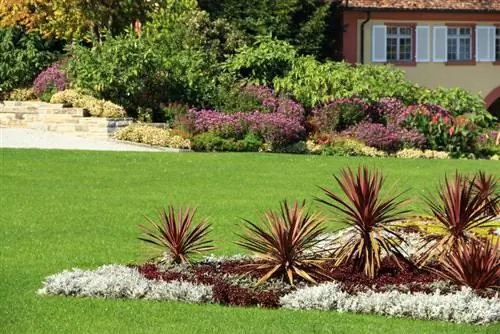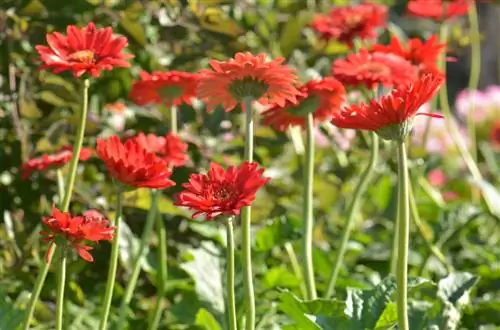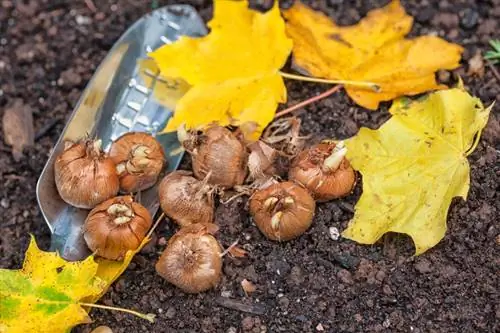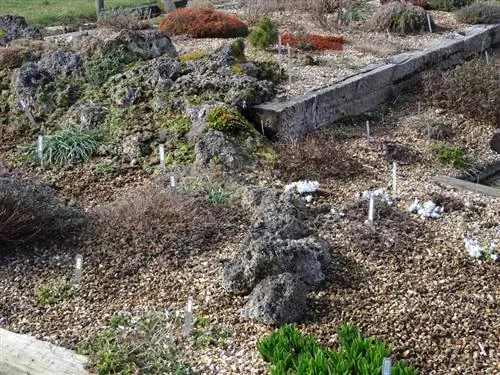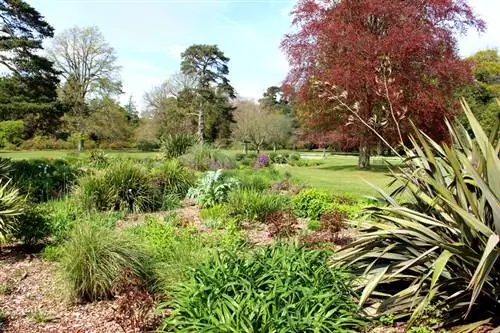- Author admin [email protected].
- Public 2023-12-16 16:46.
- Last modified 2025-06-01 06:02.
When many people hear the term yucca palm, they first think of the well-known and popular houseplant with the palm-like tuft of leaves and the straight trunk. However, this type of Yucca is not suitable for planting in the garden because it is not hardy. Instead, you can plant the related garden yucca - Yucca filamentosa. This also survives harsher winters and impresses with its exotic-looking flowers.

How do I plant a yucca palm in the garden?
To plant a yucca palm in the garden, choose a full sun, protected location and loosen the well-drained, lime-rich soil. Dig a planting hole twice the size of the plant roots, fill it with a compost-sand mixture and water with warm, lime water.
Select location and soil carefully
Plant the yucca in a full sun, protected and warm location. The soil should be nutrient-rich, but above all loose and well-drained - the plant can easily tolerate frost, but not moisture. It is therefore important to avoid waterlogging and permanently moist soil. The yucca also needs a lot of lime, which is why a soil rich in lime is beneficial for the culture.
Which plant neighbors does the yucca harmonize particularly well with?
The Yucca filamentosa may not necessarily grow tall with age, but it can become quite wide. Therefore, leave a lot of space around the planting location so that the palm lily can spread. Species that have similar needs to the yucca are particularly suitable for transplanting. These include, among others: lavender, gypsophila, woolly ziest, sedum or bergenia.
Planting Yucca correctly
When planting the yucca, it is best to proceed as follows:
- Dig a wide and deep planting hole.
- This should be about twice the size of the plant itself.
- Loosen the soil at the bottom of the planting hole well.
- Crush the excavation and
- mix this with mature compost and coarse sand.
- Hold the plant so that the roots hang into the hole without hitting them.
- Fill the planting hole.
- Press the soil well so that no voids remain.
- Water the yucca with warm, lime water.
Care: cutting, fertilizing, propagating
Once planted, the Yucca filamentosa does not require much care. All you need to do over the course of the gardening year is:
- Fertilization is only carried out with compost at the beginning of the growing season.
- The plant also receives some lime in early to mid-August.
- Watering is usually not necessary.
- Only the dead inflorescences and dried or frozen shoots/leaves are cut.
- In very cold winters, light winter protection makes sense.
- Very large / extensive specimens can be propagated by division.
Tip
If your yucca doesn't want to bloom, then it could also be due to its age: the perennial only develops when it's around 20 cm old. Its impressive floral splendor has been around for 10 years. If in doubt, just be patient and you will be richly rewarded.

